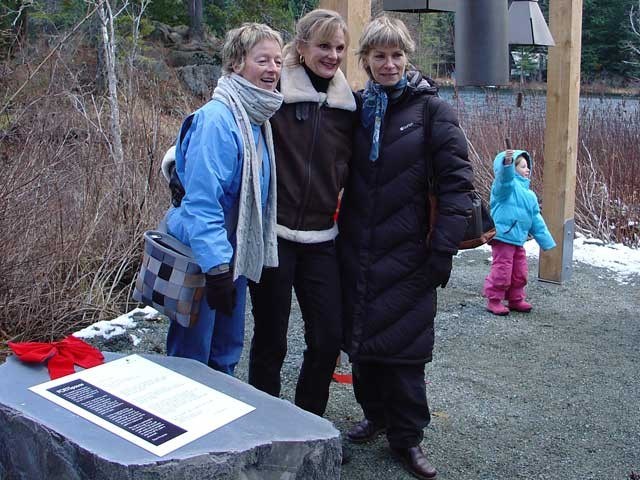Write words to win the hearts and minds
And they may appear beside the chimes.
But don’t delay. You must not wait.
You have only until Jan. 28.
That will be the last day submissions will be accepted for the
poems that appear at the site of two public art exhibits collectively known as
Poet’s Pause.
This will be second year poems will appear at the Alta Lake
Park site of the sculptures: one a giant-sized set of Adirondack chairs and the
other a set of colossal chimes.
Both were created by long-time local artist Joan Baron, whose
hope is that they will draw in all visitors to the park and give them a reason
to stop and wonder at their surroundings.
And while the art may have done that alone, said Baron, the
idea of adding a poem captures the busy visitor, creating a moment of stillness
in a hectic life.
“…The poetry makes it that much more insightful so then people
know that it is not just a toy,” said Baron.
“There is emotion that the artist, myself, is trying to emote
by having you pause just a moment longer to really enjoy the space that we have
here. It makes that complete circle.”
Baron, who is part of the Public Art Committee, won the contest
in 2007 to place three-dimensional art in the valley as part of the
Neighbourhood Valley Trail Public Art Series.
Her art is carried at the Fairmont Chateau Whistler’s Mountain
Galleries.
Two sites with spectacular surroundings were chosen in the
Lakeside area. But as part of her art Baron also wanted a poem to be displayed,
likely on an annual basis to celebrate writers and provoke thought.
The poems at the giant chair site are themed “togetherness”
while those at the chimes must have a “listening” theme.
Everyone is invited to enter the contest, which is usually
judged by three residents with a literary history.
Poems are given to the judges anonymously at first.
“It is not a judgment call on whether or not it is pure
traditional poetry,” said Baron.
“I think it is just the creativity and how much it moves the
jury. You don’t have to be a professional writer to participate in this. Anyone
can participate.
“You could just come and say three words and if it is
incredible that might do it.”
Last year 44 poems were submitted from 30 poets.
“I think the writers of the community are thrilled to have a
place where they can be a part of that art,” said Baron adding that she is also
touched when she finds first hand how Poet’s Pause affects people’s lives.
“…One fellow said to me as he was getting his bike from around
the chairs, ‘I come here almost every day with my Dad while we are here and we
just reflect upon the moment, we just sit in the big chairs and look out and
reflect and it is really special.’”
There is no doubt that the sculptures have become popular
stopping places and provide a voice for poets in the valley.
Said Kevin McFarland, municipal parks planner: “I think that
was a particularly brilliant part of Joan’s concept for Poet’s Pause, to create
a place for writers when they are just not normally part of sculpture public
art projects.”
He has already received several submissions as well as some
queries on the competition.
For more information go to kmcfarland@whistler.ca, or call
Kevin McFarland at 604-935-8185.
The fee paid for each poem selected through this competition
will be $200.
There will be no
compensation for proposals.
Proposals should be submitted to:
Resort Municipality of Whistler
4325 Blackcomb Way
Whistler, BC, V0N 1B4
Attention: Kevin McFarland
or emailed to: kmcfarland@whistler.ca
Winners will be notified by Feb. 9, 2009.
The first phase of Neighbourhood Valley Trail Public Art Series
led to the creation of two sculpture projects, a sculpture next to the River of
Golden Dreams called “Cycling Salmon” by Penny Martyn, and a series of
sculptures by Laurence Knowles that reference First Nations stories.
The second phase was a stone sculpture called “Last Love” by
Patrick Sullivan near the Lake Placed Road train station. Joan Baron’s
projects, Poet’s Pause, is part of phase three.
All of the projects give the Whistler Valley Trail a unique
character and in some way involved the public in the creation of the art.
The stone sculptures were carved in public places, allowing
people to talk to, or observe, the artist creating the art. The project Cycling
Salmon featured an artist-led community tile making workshop. The artist, Penny
Martyn, incorporated these tiles into her sculpture.
Poet’s Pause used the work of writers by creating a place to
inspire and display poetry.
Some form of public involvement is now a requirement for project proposals.




